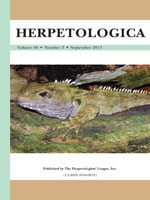Abiotic factors have been demonstrated to mediate predator–prey interactions in aquatic and terrestrial communities. For amphibians changes in pH, pollutants, temperature, ultraviolet-B, and moisture levels can alter behavioral, developmental, and physiological aspects of predator–prey relationships resulting in reduced survivorship. Some rhacophorid frogs deposit eggs as foam nests on vegetation overhanging water, presumably as an adaptive response to the risk of egg predation by aquatic animals. Terrestrial insects are known to feed on frog embryos in foam nests, and anecdotal observations in tropical East Asia and Southeast Asia suggested that predation of frog embryos by dipteran fly larvae may be higher in unshaded areas. To understand the role that shading may play in this relationship, I compared survival of embryos of the Brown Tree Frog (Polypedates megacephalus) infested by larvae of a calliphorid fly (Phumosia coomani) in shaded and unshaded conditions in a controlled field study. When foam nests were infested by flies, survival to hatching was more than 15 times higher in shaded than in unshaded nests. Less than 1% of frog embryos survived to hatching in unshaded, infested foam nests which contained twice as many fly larvae as shaded nests. These results combine to suggest that both colonization and predation by flies are higher in unshaded foam nests. The mechanism triggering increased colonization of unshaded nests is unclear, but warmer temperatures on the surfaces of unshaded foam nests may decrease hatching time for fly eggs, permitting fly larvae to move inside the foam nest more quickly and begin feeding on amphibian embryos. Although the risk of predation by calliphorid flies is higher for P. megacephalus in unshaded areas, the benefits of developing in warmer conditions, including faster embryonic and larval development and larger size at metamorphosis, may offset this risk.
How to translate text using browser tools
1 September 2013
Shading Mediates the Interaction Between an Amphibian and a Predatory Fly
Nancy E. Karraker
ACCESS THE FULL ARTICLE

Herpetologica
Vol. 69 • No. 3
September 2013
Vol. 69 • No. 3
September 2013
abiotic factor
calliphoridae
forest disturbance
Phumosia coomani
Polypedates megacephalus
predator–prey interaction
Rhacophoridae




